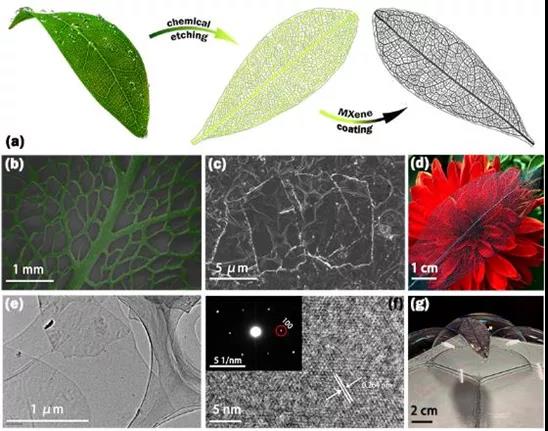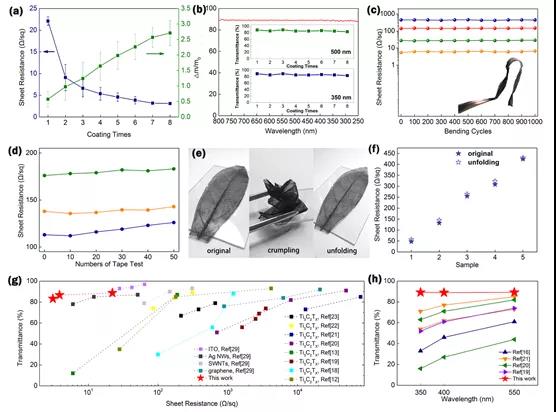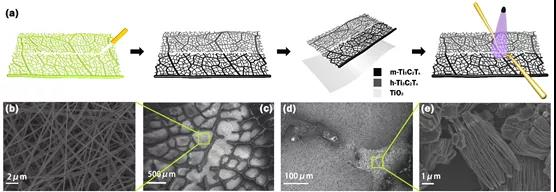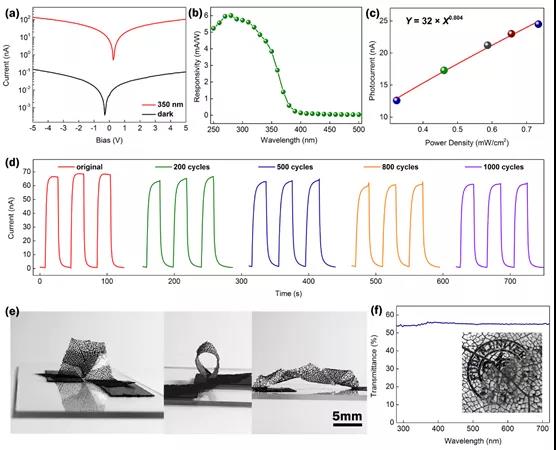
hotline:
17715390137
Tel/Wechat:
18101240246 (Technology)
0512-68565571
Email:mxenes@163.com (Sales Engineer)bkxc.bonnie@gmail.com
Scan the code to follow or search the official account on WeChat:
2D Materials Fronrier After paying attention,
click on the lower right corner to contact us,
Enter enterprise WeChat.
Professional Services Online

【Research Background】
MXene materials are widely used in electronic devices because of their high electrical conductivity, good hydrophilicity and flexibility. How to greatly increase the transparency of MXene electrodes while using its electrical conductivity is one of the problems to be solved urgently to broaden the application range of MXene materials in the field of optoelectronic devices.
【Achievement Introduction】
Recently, Professor Fang Xiaosheng of Fudan University published a research paper titled "Bio-inspired transparent MXene electrodes for flexible UV photodetectors" in Materials Horizons, a high-impact journal in the field of materials. This paper proposes a method of simulating leaf vein structure to obtain At the same time, it has a high conductivity and high transmittance MXene mesh structure, which can be used as an electrode material for transparent flexible photodetector devices. The transmittance of this electrode in the ultraviolet-visible band is close to 90%, and the square resistance is only 3Ω sq-1. By coating MXene materials with different surface groups, the structure can also be used as a work function adjustable electrode in photodetectors. Whether as a separate electrode or a photodetector, this structure can achieve 1000 bends while maintaining good optical and electrical performance.
【Graphic introduction】

Figure 1. MXene mesh structure of leaf vein
First, the blades are treated in lye and urea solution in sequence to obtain a mesh structure, coated with a layer of MXene material, and through the hydrogen bonding between urea and the blade and the MXene sheet, a layer of highly conductive MXene can be obtained Bionic mesh structure. The network can land on a flower or a few soap bubbles, indicating that this method can obtain a conductive structure with ultra-light and high transparency.

Figure 2. Optical, electrical, and flexibility of the MXene electrode resembling a leaf vein
It can be seen from the results of multiple tests that the conductivity of the electrode can be adjusted by changing the quality of the coated MXene. As the MXene adhered to the leaf veins gradually increases, the conductivity of the electrode network gradually increases, after 8 coatings After coating, the square resistance can be reduced to 3 Ω sq-1 while keeping the transmittance close to 90%. In addition, within the range of 1~103Ω sq-1 where the square resistance can be adjusted, the conductivity of the electrode can be kept unchanged after 1000 times of bending, even if it is folded and crumpled, it can still recover as before. Through the Scotch tape test, it can be verified that the MXene layer and the leaf vein have a very good bonding force, which is also one of the reasons why the mesh electrode has good flexibility and stability.

Figure 3. Photodetector constructed on the basis of bionic MXene electrode
The bionic MXene electrode has very high transmittance and good conductivity, so it has great potential in flexible optoelectronic applications. In the article, this electrode is applied to a flexible ultraviolet detector by combining with a flexible electrospinning TiO2 film. Since the work function of the MXene material itself can be adjusted by changing the surface chemistry, two MXenes with different work functions obtained by the MILD method and the HF etching method are also used in this example, which are respectively coated on different parts of the leaf vein. To build an ultraviolet detector.

Figure 4. Performance and schematic of translucent flexible ultraviolet light detection device
The device has a significant response to ultraviolet light, and has good blindness to ultraviolet light. The current is also very stable under the irradiation of 350 nm ultraviolet light. The characteristic of this device is that, due to its good flexibility, it can be bent into various shapes to realize UV detection in different situations. In addition, the transmittance of the device is about 55%, showing translucent characteristics.
The work was published in Materials Horizons (DOI: 10.1039/D0MH00394H).
Full text link: https://doi.org/10.1039/D0MH00394H
Source: MXene Frontie
This information originates from the Internet for academic exchange only. If there is any infringement, please contact us to delete it immediately

| Reminder: Beijing Beike New Material Technology Co., Ltd. supplies products only for scientific research, not for humans |
| All rights reserved © 2019 beijing beike new material Technology Co., Ltd 京ICP备16054715-2号 |